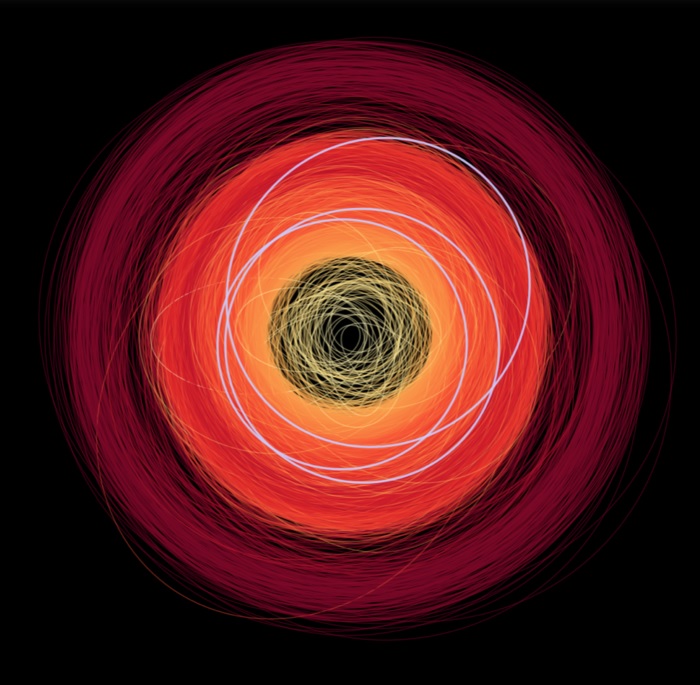The Gaia Spacecraft Was Studying Stars, But It Found Something Else — 3 Asteroids

The Gaia spacecraft just did a bit of bonus science: While the European Space Agency (ESA) mission is designed to measure the positions and velocities of stars, Gaia recently found three asteroids not previously known to astronomers.
Asteroids are space rocks left over from the early solar system. Investigating them shows researchers what the solar system looked like billions of years ago, before the planets formed out of material around the sun. Gaia found these three asteroids in December 2018, and a ground-based telescope at Haute-Provence Observatory in France confirmed the find.
The three asteroids have unusual paths through space, ESA officials said in a statement. While the sun and the planets orbit in three-dimensional space, the orbits converge in a flat "plane" — almost like everything is orbiting on top of a solar-system-sized plate. Many asteroids orbit in the same plane as the sun and the planets, but the paths of these three asteroids are tilted — at 15 degrees or more — compared with the plane of the solar system.
"The population of such high-inclination asteroids is not as well studied as those with less tilted orbits, since most surveys tend to focus on the plane where the majority of asteroids reside," ESA officials said in the statement. "But Gaia can readily observe them as it scans the entire sky from its vantage point in space, so it is possible that the satellite will find more such objects in the future and contribute new information to study their properties."
When Gaia detects asteroids, astronomers receive information immediately through an online alert system, so they can do follow-up observations. Such observations require a telescope that is at least 1 meter (about 3 feet) in diameter, ESA officials added.
If astronomers confirm the same asteroid orbit that Gaia sees, the object is cataloged by the Minor Planet Center, which is the worldwide organization responsible for collecting information on asteroids, comets and other small bodies. Even if Gaia doesn't find a new asteroid, its observations can tell us more about the orbits of asteroids that are already known, ESA officials said.
"So far, several tens of asteroids detected by Gaia have been observed from the ground in response to the alert system, all of them belonging to the main belt, but it is possible that also near-Earth asteroids will be spotted in the future," ESA officials added.
Get the Space.com Newsletter
Breaking space news, the latest updates on rocket launches, skywatching events and more!
- How the Gaia Galaxy-Mapping Satellite Works (Infographic)
- This 3D Color Map of 1.7 Billion Stars in the Milky Way Is the Best Ever
- Incredible Technology: How to Find Dangerous Asteroids
Follow Elizabeth Howell on Twitter @howellspace. Follow us on Twitter @Spacedotcom and on Facebook.
Join our Space Forums to keep talking space on the latest missions, night sky and more! And if you have a news tip, correction or comment, let us know at: community@space.com.

Elizabeth Howell (she/her), Ph.D., was a staff writer in the spaceflight channel between 2022 and 2024 specializing in Canadian space news. She was contributing writer for Space.com for 10 years from 2012 to 2024. Elizabeth's reporting includes multiple exclusives with the White House, leading world coverage about a lost-and-found space tomato on the International Space Station, witnessing five human spaceflight launches on two continents, flying parabolic, working inside a spacesuit, and participating in a simulated Mars mission. Her latest book, "Why Am I Taller?" (ECW Press, 2022) is co-written with astronaut Dave Williams.









